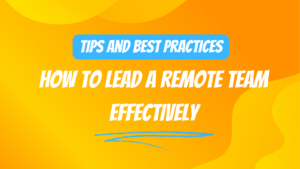Managing Performance with Coaching: A Guide for People Leaders
Are you struggling to manage the performance of your team members.
Do you find it hard to motivate them, give them feedback, and help them grow?
If so, you are not alone. Many team leaders and managers face similar challenges in this fast-paced and competitive industry.
Poor performance can have serious consequences for your team and your organization. It can lead to low productivity, high turnover, low customer satisfaction, and reduced profitability. It can also affect the morale, well-being, and engagement of your team members.
Fortunately, there is a way to overcome these challenges and improve your team’s performance. It is called coaching. Coaching is a process of partnering with your team members to help them achieve their goals, develop their skills, and maximize their potential. Coaching can help you create a culture of learning, feedback, and growth in your team.
In this blog post, you will learn:
• What coaching is and how it differs from other forms of management
• How coaching can benefit your team members and your organization
• What coaching models and techniques you can use to coach effectively
• What tools and training you can use to enhance your coaching skills
What is coaching and how does it differ from other forms of management?
Coaching is a collaborative and personalized process that involves asking powerful questions, listening actively, providing feedback, and facilitating action. Coaching is not about telling your team members what to do or how to do it. It is about helping them discover their own solutions, strengths, and opportunities.
Coaching differs from other forms of management in several ways:
• Coaching focuses on the future, not the past. It helps your team members set clear and realistic goals and plan how to achieve them.
• Coaching is based on trust, not authority. It creates a safe and supportive environment where your team members can share their challenges, concerns, and aspirations.
• Coaching is empowering, not controlling. It helps your team members take ownership of their performance and development.
• Coaching is developmental, not evaluative. It helps your team members learn from their experiences, identify their gaps, and improve their competencies.
How can coaching benefit your team members and your organization?
Coaching can have many positive outcomes for your team members and your organization. Some of the benefits of coaching are:
Improved performance. Coaching can help your team members improve their productivity, quality, efficiency, and innovation. It can also help them solve problems, overcome obstacles, and adapt to changes.
Increased motivation. Coaching can help your team members increase their self-confidence, self-efficacy, and self-motivation. It can also help them align their goals with the vision and values of your organization.
Enhanced engagement. Coaching can help your team members increase their satisfaction, commitment, and loyalty. It can also help them feel valued, respected, and appreciated.
Reduced stress. Coaching can help your team members reduce their stress levels, cope with pressure, and balance their work-life demands.
Greater retention. Coaching can help your team members stay longer in your organization, reduce absenteeism, and prevent turnover.
What coaching models and techniques can you use to coach effectively?
There are many coaching models and techniques that you can use to coach effectively.
However, one of the most popular and widely used coaching models is the GROW model.
The GROW model was created by Sir John Whitmore and colleagues in the late 1980s and has become one of the most common coaching frameworks for setting goals, improving performance, and facilitating change.
The GROW model consists of four stages:
Goal: This stage involves establishing a specific, measurable, achievable, relevant, and time-bound (SMART) goal that your team member wants to achieve.
Reality: This stage involves assessing the current situation of your team member in relation to their goal. It involves identifying the facts, challenges, resources, and opportunities that are relevant to their goal.
Options: This stage involves exploring the possible actions that your team member can take to achieve their goal. It involves generating ideas, evaluating alternatives, and choosing the best option.
Will: This stage involves committing to a concrete action plan that your team member will follow to achieve their goal. It involves setting deadlines, accountabilities, and measures of success.
- To use the GROW model effectively, you need to apply some coaching techniques at each stage. Some of these techniques are:
- Asking open-ended questions that stimulate thinking, reflection, and discovery. For example, “What do you want to achieve?”, “What is the current situation?”, “What are the possible options?”, “What will you do next?”
- Listening actively and empathically to your team member’s responses. For example, using verbal and non-verbal cues to show interest, attention, and understanding. For example, nodding, smiling, paraphrasing, summarizing, and clarifying.
- Providing feedback that is specific, constructive, and balanced. For example, highlighting the strengths, areas of improvement, and suggestions for your team member. For example, “You have done a great job in setting a SMART goal. However, I think you can be more realistic about the time frame. How about extending it by two weeks?”
- Facilitating action that is aligned with the goal, realistic, and achievable. For example, helping your team member break down their goal into smaller steps, identify potential obstacles and solutions, and monitor their progress. For example, “What are the first three actions that you need to take to achieve your goal? How will you overcome the challenges that you might face? How will you track your results?”
What tools and training can you use to enhance your coaching skills?
To become a better coach, you need to continuously improve your coaching skills and knowledge. There are many tools and training that you can use to enhance your coaching skills. Some of them are:
Coaching tools: These are digital or physical resources that can help you design, deliver, and evaluate your coaching sessions. For example, questionnaires, worksheets, diaries, and journals.
Coaching training: These are courses or programs that can help you learn the theory and practice of coaching. For example, online or offline courses, certifications, accreditations, workshops, and webinars.
Coaching books: These are books that can help you gain insights and inspiration from experts and practitioners in the field of coaching. For example, Coaching for Performance by John Whitmore, Co-Active Coaching by Henry Kimsey-House et al., and The Coaching Habit by Michael Bungay Stanier.
Coaching mentors: These are experienced coaches who can guide you, support you, and challenge you in your coaching journey. For example, senior coaches, peers, or supervisors who can offer you feedback, advice, and encouragement.
Conclusion
Coaching is a powerful tool for enhancing the performance of your team members in the IT/ITES sector.
By using coaching models and techniques, you can help your team members set and achieve their goals, develop their skills, and maximize their potential.
By using tools and training, you can enhance your coaching skills and become a more effective coach.
If you want to learn more about coaching and how to apply it in your team or organization, you can check out our website for more resources and tips.
You can also contact us for a free consultation and see how we can help you with your coaching needs.
Follow Notesday Academy
Topic Categories
Get the latest updates
Sign up for our most recent posts
Take out some time to read. No spam, we will email you when a new post is published.




